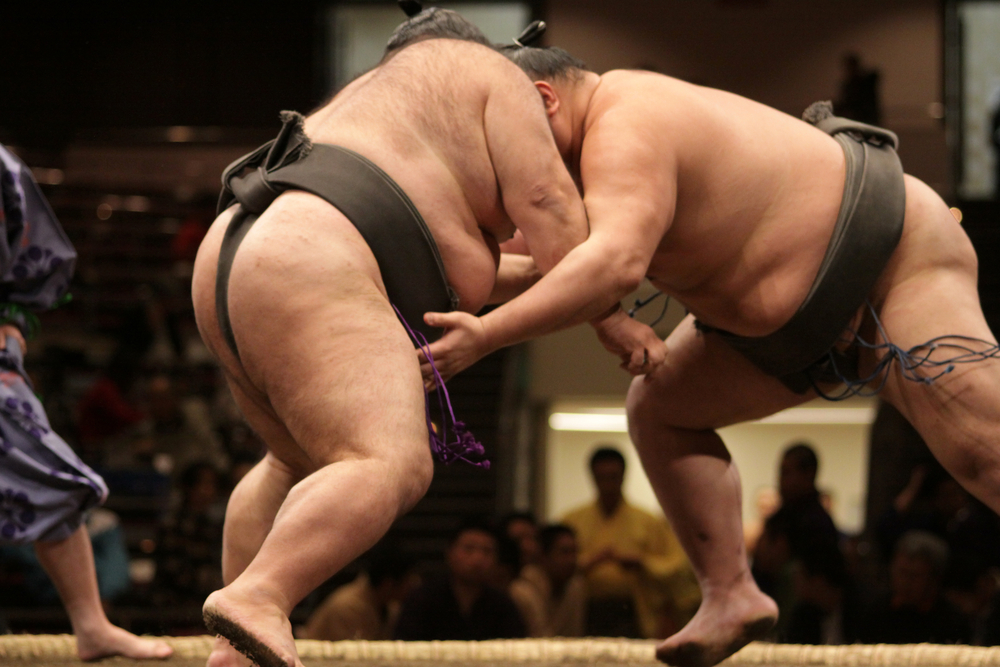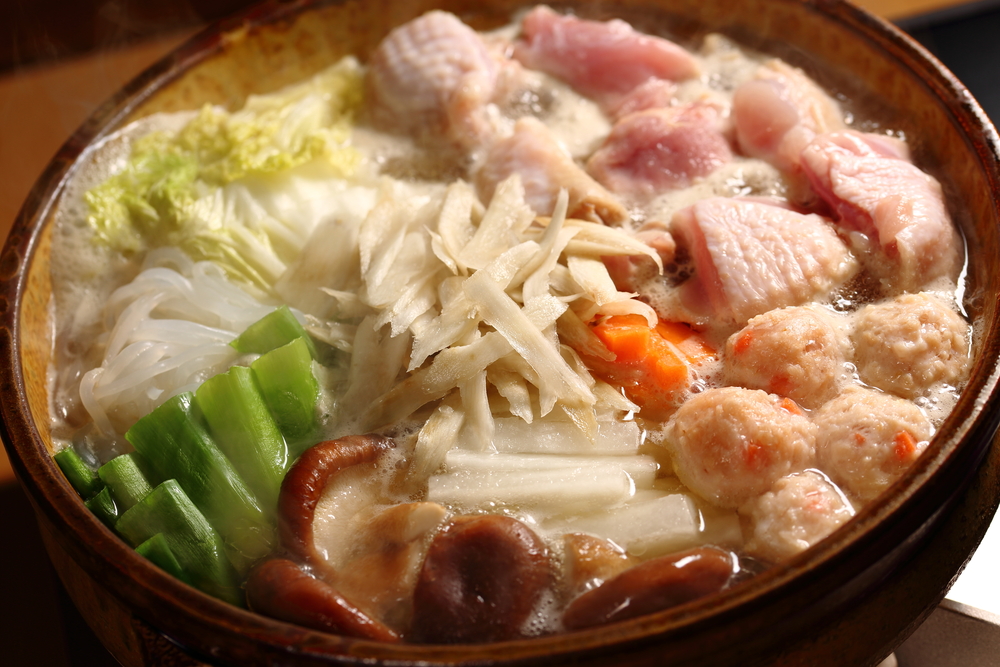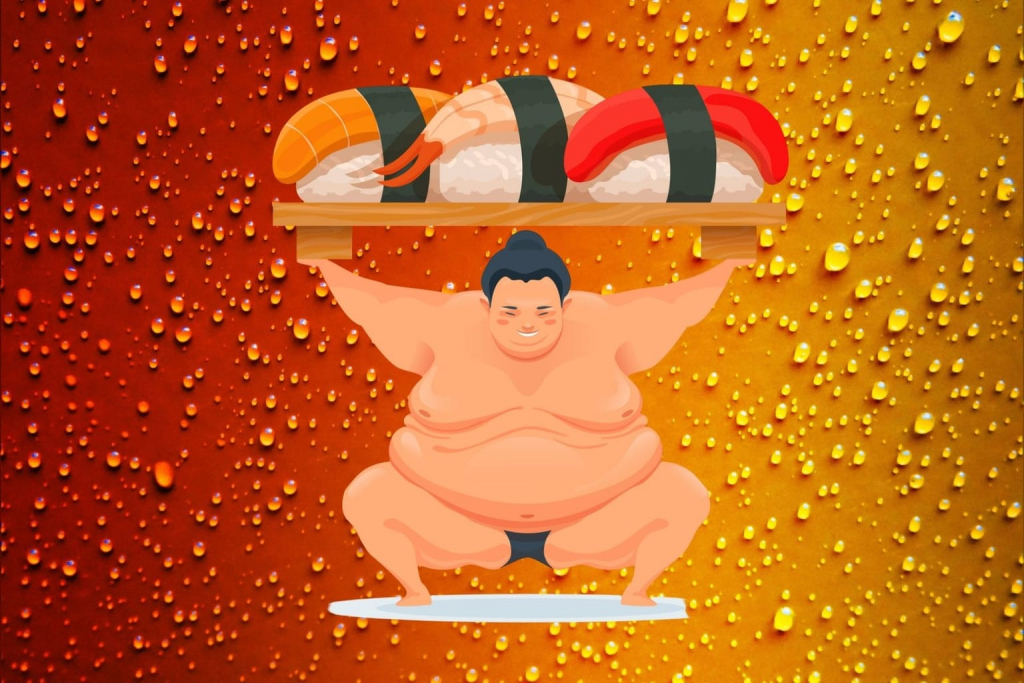Sumo is more than just the national sport of Japan. Its tradition and culture. And the weight of tradition is only outweighed by the bodies of the athletes who participate in it. When looking at how traditional sumo is, a big question comes to mind. How do these goliaths of the sporting world train and eat for their upcoming matches? What can we learn?
No Days Off for Sumo Wrestlers?
Unlike most other major sports around the world, sumo doesn’t have seasons. It has tournaments that occur year-round every other month. In other sports, having an on- and off-season typically breaks up the athletes’ lives into manageable segments. They train hard leading up to the start of the season, play it out, then unwind until the next cycle rolls around. This is not a luxury sumo wrestlers have. With tournaments every other month, they’re constantly doing big contest preparation.

J. Henning Buchholz / Shutterstock.com
They make their entire lives about the sport. Going back to the start of sumo, wrestlers have lived together in a communal housing situation where they constantly train under an older experienced master. While they’re training all-day, everyday, they do take time for scheduled rests. In the world of sumo, it’s the norm to train until lunch then rest for the latter half of the day. This ends up giving them a similar amount of downtime, compared to other sports, when you break it down by the hour. The downtime involves lots of movement, stretching, bathing and naps to get in the most recovery possible from a day of training. Even if you aren’t training for a sumo tournament, these concepts are relevant for all fitness levels. It’s, of course, important to work hard consistently, but without adequate rest, the human body will burnout.
Getting Huge
While the sporting world gets increasingly modernized, with athletes training with the most high-tech equipment governments can afford, sumo takes a step back to a much more traditional method. They wake up early and work hard. They train, like many other martial artists, through the practice of sumo movements as well as sparring matches. And while these bodyweight workouts may seem obsolete in the modern world, they get the job done for several reasons.
Using your body weight to train is much harder to do when your body has more weight for you to move. It’s easier for someone who weighs 50kg to do 10 pull-ups than someone who weighs 150kg. Moving more weight requires more strength. And sumo wrestlers have a lot of weight to move.
“The best training for a specific sport is to do the sport”
In sports training there is also a common principle: The best training for a specific sport is to do the sport. If your goal is to be a swimmer, swimming is the best way to guarantee you’re building the muscles you need to swim. Playing tennis all day won’t turn you into an Olympic pole-vaulter but will make your body better at tennis. It makes sense that if your goal is to be good at pushing a giant man out of a circle, then the best way to train is by pushing giant men out of circles. Beyond movements and sparring, sumo wrestlers have to practice balance and flexibility every day. Both of which are much more difficult with a bigger body. Through balanced training focusing on movements that mimic and support your goal activities, huge gains can be made.
Eat Big. Get Big.

Sumo wrestlers’ bodies are strong and carefully sculpted to be as powerful as possible. And to maintain health, despite their immense size, they have to keep their meals nutritious.
Their entire morning is spent training, so breakfast is usually cut out. While the meaning behind this is rooted in tradition, it holds up to modern methods. Many athletes swear on training fasted for better results, and intermittent fasting is a scientifically backed diet taking off around the world. While not fueling before a huge workout can leave you feeling weaker, in the long term if you’re eating enough throughout the day to meet your needs, the timing is less important than many people think.
“You can drink hundreds of calories without even realizing they’re there”
When they eat after training, it’s usually a mix of very healthy whole food choices. Chanko Nabe is a common daily meal for sumo wrestlers. It’s essentially a soup full of in-season vegetables, ginger, lean meats, and eggs. And of course, it wouldn’t be Japan if it wasn’t eaten with rice. Nothing in the diet is unhealthy. But to stay big they have to eat a ton, and none of it goes to waste, as it shows respect for the farmers who grew it. Eating thousands of calories of healthy and satisfying whole food sources is a real challenge. For most people training on an empty stomach in the morning can lead to overeating at lunch but, in sumo, this is an advantage. Nabe, soups and other liquids are easier to eat more of without feeling full. This is why soda, alcohol and juices are a big contributor to weight gain. You can drink hundreds of calories without even realizing they’re there.
While most people don’t have the goal to become as big as possible and won’t need to trick their bodies into eating more, incorporating healthy whole foods and learning how to best eat the calories you need without making yourself uncomfortably full or hungry is an important skill to learn.
Updated On April 15, 2021









